If you want to transform your garden on a budget, then Jo and Simon Rutherford have some brilliant tips and ideas to copy.
When they moved into their home a few years ago, the garden was a patch of bare lawn running up to the fence line.
There was a concrete flagstone path from the back door to the garage. A few shrubs were squashed in along the fence. ‘And that was about all,’ says Jo.
The house was recently built, and, like many new builds, the garden is also wide and shallow.
Now it is so transformed that it is opening for Whitstable Open Gardens (the National Garden Scheme).
Garden planning
When you want to transform your garden, your first step should be to wait. Jo and Simon moved in in September, but didn’t start the garden until the following spring.
You’re sometimes advised to wait a whole year to see what emerges from a garden, but it was clear that there was nothing here.
Even so, it’s worth spending some time just thinking about the garden, looking up ideas and seeing how you use the space. Notice how you walk across it and where natural paths are.
There are two really good posts to read while you’re dreaming about how you’re going to transform your garden. They are how to design a garden if you’re not a garden designer with Pollyanna Wilkinson and 5 top garden design tips + two common mistakes to avoid.
Ideas for wide, shallow gardens
Jo researched garden layouts and design ideas for wide, shallow gardens. ‘There’s not much out there, but I knew that I needed to stop the eye going straight to the back fence.’
She achieved this by designing her borders on the diagonal.
When you run borders across the diagonal – or even simply across the garden – the eye stops on the border and then moves on. If there is nothing between you and the back fence, then the eye goes quickly to the back. Even just a few seconds’ pause can make the view across the garden feel larger.
Jo also painted the fences nearly black to help them ‘recede’ and also because dark backgrounds really show off plants.
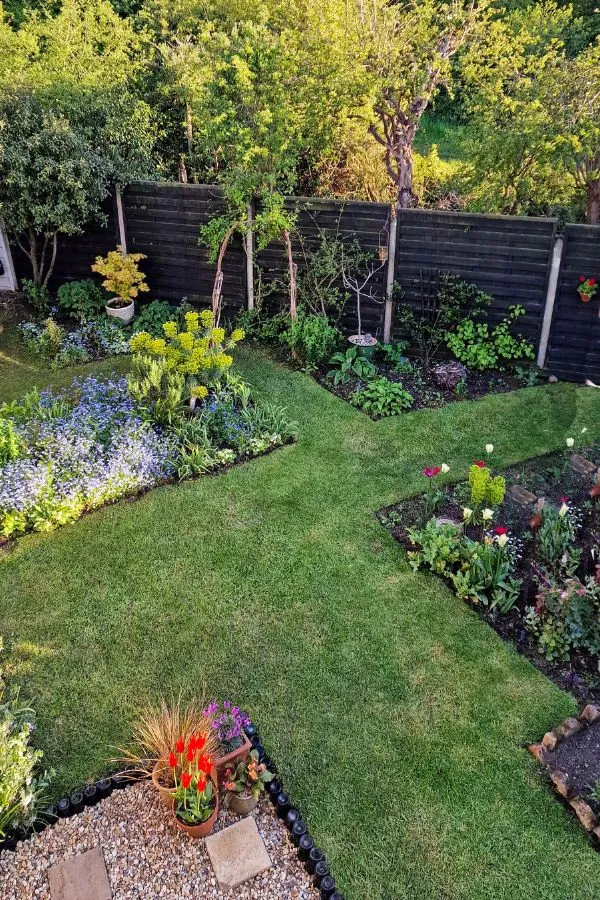
Running borders diagonally across a wide space makes it look bigger. The eye has to stop to take in the shapes rather than go straight to the back fence.
Garden bed construction
Jo decided on two kinds of border edging.
One border is for her veg garden, where she’s currently growing broad beans. Here she’s used bricks, which a client no longer wanted.
Like an increasing number of people today, Jo doesn’t have space for a separate vegetable garden so she grows broad beans and more in a border in the main garden.
Jo says that she’d originally planned a raised bed, but that her brick-laying skills weren’t up to it. So she simply placed the bricks at an angle, half buried in the earth.
Jo submerged the whole wine bottles in a trench and filled in the soil around them. She said that the hardest part of the job was getting the labels off! Jo and Simon laid the gravel themselves – it’s the easiest hard surface to lay if you’re not experienced at DIY.
Seasonal planting – go for big blocks of colour
Think about having one or two big splashes of colour every season. If you choose plants that grow well locally, you can achieve a big impact on a small budget.
Jo’s garden in late spring is blue, citrus green and orange. The blue comes from huge clumps of forget-me-nots. She originally got some from her mother. They then self-seeded. Now all she needs to do is pull them out where she doesn’t want them to grow.
She also has self-seeding Euphorbia robbiae, which adds the splash of citrus green in spring.
If you include self-seeding plants in your garden, you’ll get plants for free. But you do have to make sure you don’t weed them all out when they first pop up.
I counted 25 self-seeding plants in my garden. This means that sometimes it’s full of colour, even if I haven’t bought or planted any plants for ages. And it’s both easy care and cheap.
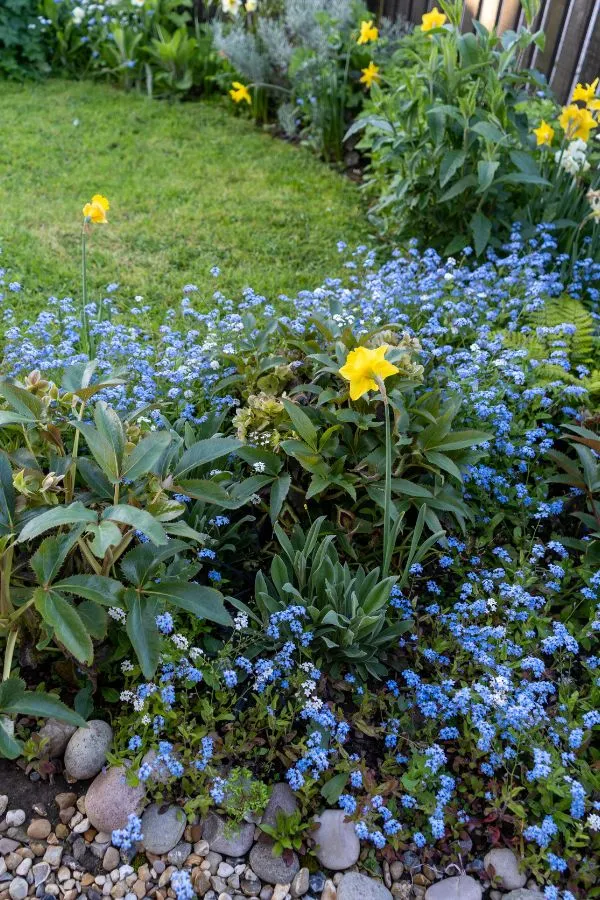
Transform your garden with big blocks of colour from easy-to-grow plants, such as these forget-me-nots, which self-seed.
Many of Jo’s plants are cuttings from friends or plants that have been divided. Sometimes people want to throw plants away. She always says ‘I’ll have that!’
When I decided to re-vamp my border, I realised that buying all the plants new would be very expensive. So I researched all the ways you could save money on plants.
Transform your garden with upcycled and second-hand items
If someone’s throwing something away, Jo is often happy to give it a home. She has two ladders that belonged to a client. He didn’t want them and she now uses them to display plants.
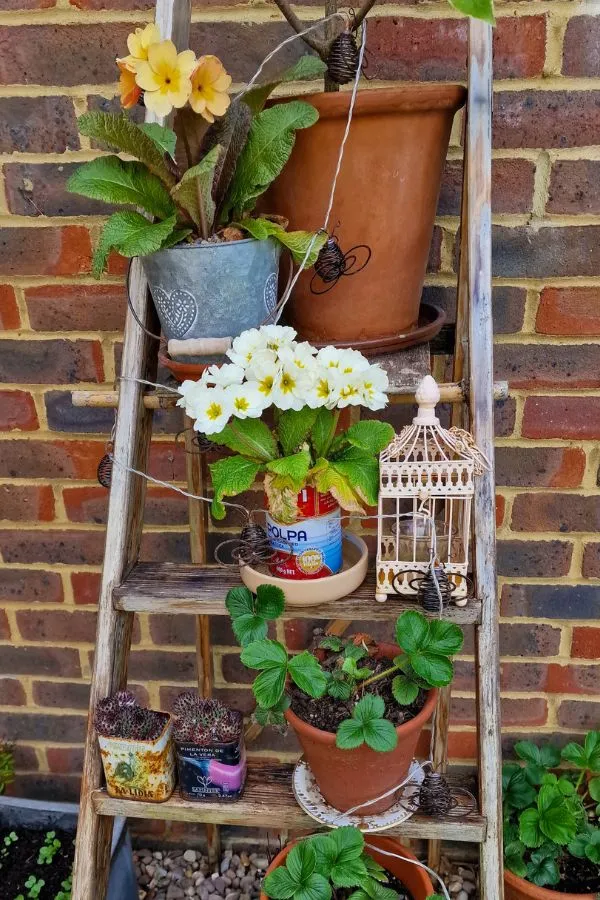
Two old ladders that belonged to a client. He wasn’t using them so he gave them to Jo. They add height to the seating area.
She has hung a pallet on a sunny wall, turning it into a planter. ‘I added a piece of wood to the bottom of each pallet “shelf”. Then I lined it with plastic from an old compost bag, tearing some holes in it for drainage.’
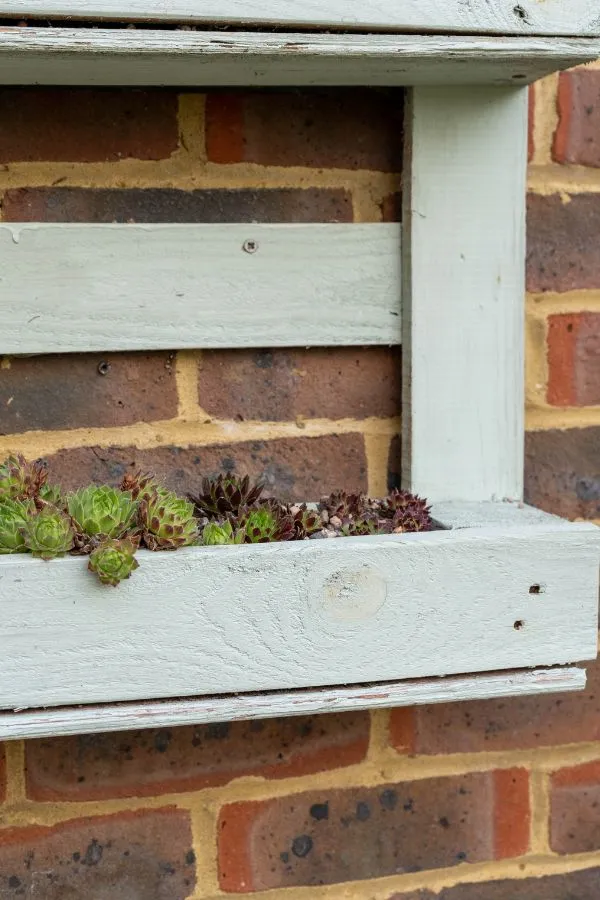
Jo painted this piece of pallet and hung it on the wall. She added a strip of wood to make it into a ‘window basket’ type planter. She then lined it with plastic from an old compost sack. It’s a very shallow planter so she warns that it’s not suitable for plants that need a lot of watering.
The two colourful chairs also came from a client who was revamping her garden furniture. When she heard that the chairs were going to the tip, Jo volunteered to take them home. She’s mended them and painted them.
These chairs were being thrown away. Jo brought them home and painted them.
There are some old tree stumps planted with succulents. And she’s also dug a small wildlife pond, lining it with some leftover lining. Her brother had just created a larger pond in his garden, and there was a small piece of lining left over.
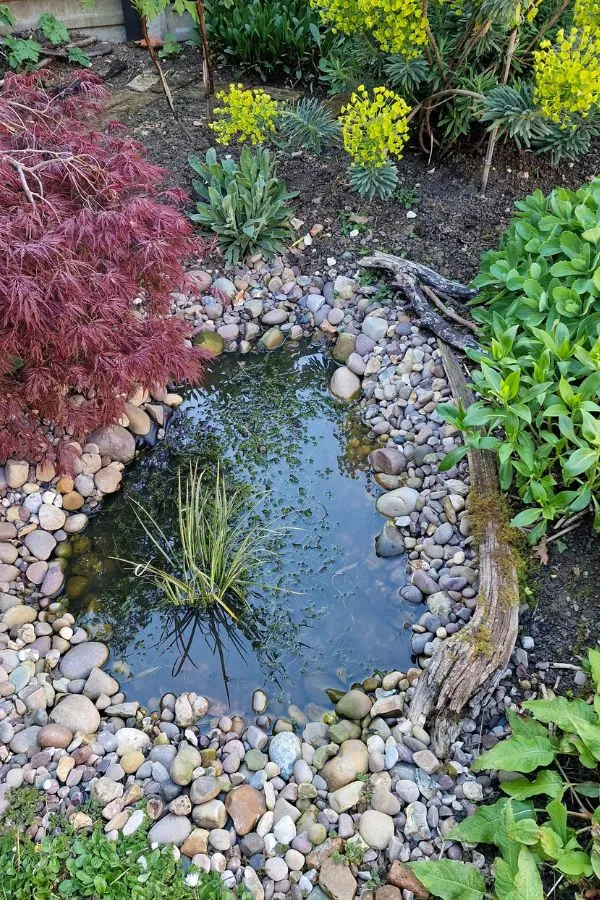

Leave a Reply